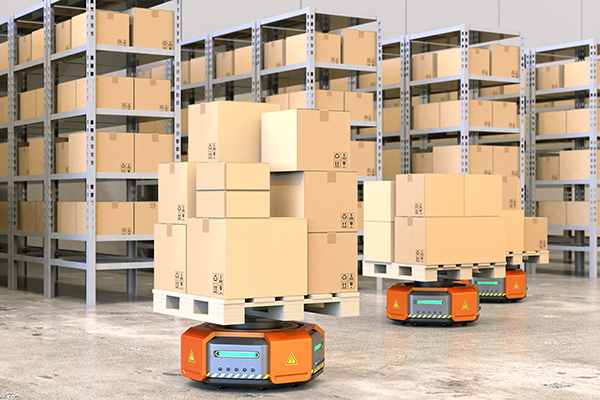Material Handling & Logistics Conference: Day 2.
Can we talk about robots? And, not just robots. Let’s add Big Data, Artificial Intelligence and Machine Learning to the conversation, all of which have been on the menu at this year’s conference.
Can we talk about robots? And, not just robots. Let’s add Big Data, Artificial Intelligence and Machine Learning to the conversation, all of which have been on the menu at this year’s conference.
They are, without question, the technologies that have gotten the attention of the investment community – one of the reasons there are more startups in all of these disciplines than you can shake a stick at. They’re also the building blocks of the digitization of the supply chain. At the same time, they can be confusing; we tend to think of them as separate things without understanding the relationship between them; and, especially in operations, which is the focus of this conference, it’s not always clear what they mean to us.
Based on a couple of presentations I attended as well as conversations over meals, here are a couple of takeaways:
They’re related, and not separate technologies
It’s easy to think of Big Data, Artificial Intelligence, Machine Learning and Robotics as four distinct things. But the presentation on AI basics I attended yesterday was delivered by George Babu, the co-founder of Kindred, a robotic startup that right now is specializing in robotic putwalls. An example is the way the Kindred robot learns to pick an item – in the best case scenario. Using vision systems, it scans the item and using artificial intelligence – think of it as applying past experience - identifies the area where it can pick up the item. If that pick is successful, that information becomes part of the robot’s historical data base that can inform picking another item that looks similar. If unsuccessful, a robot pilot – an individual at a remote location monitoring Kindred robots – can take over control of the robot and pick the item. Based on that experience, the robot now knows how to pick that item the next time it sees it. And that’s machine learning. All of these technologies are building on one another to make the robotic technology a success.
Robots aren’t science fiction; they’re here and now
Following the presentation by Babu, I sat in on The Rise of the Warehouse Robot by Crystal Parrott. She is Dematic’s vice president – Robotics Center Of Excellence but comes to our industry with experience in manufacturing, including a stint with robotics at GM. Parrott’s message: While most of us think of robotics as futuristic – and there is a lot of work to be done to adapt robots to the uncertainty, unstructured environments and large variety of SKUs that is common to distribution – they’re actually here and in the field now. Robots are already doing palletizing, layer picking, case picking and piece picking in distribution, as well as horizontal travel. They’re just not doing it in large numbers. One another note – while there are a lot of vendors trying to tackle the same problem – the important differentiation isn’t the hardware, but the software.
One size does not fit all
Yes, there are lots of robotic providers out there, but to differentiate themselves, many are focusing on a niche application, be it picking from tote to tote, say in a goods to robot situation, or utilizing a “swarm strategy” in mobile collaborative robots. It’s important to understand the problem you want to solve, and then find the partner with a solution for your problem.
That doesn’t mean there isn’t a risk
One of the things that George Babu said was that this is a new tool for the warehouse and distribution center. If you’re an early adopter, “You have to make a bet.” Parrott said something similar, pointing out that robotics have come a long way, but are not as accurate as a barcode scanner. “Being 93% accurate may or may not be good enough for your operation,” she said. And, there’s another risk that John Santagate, the analyst covering robotics for IDC, pointed out: There are so many startups, that not all are going to survive. Some will be bought out by the large system integrators and some will go belly up. That’s the nature of an emerging technology. Put another way, not all bets will pay off. Parrott had an interesting response to that observation, which was that putting in robots isn’t like putting in a multi-million dollar goods to person system complete with conveyor, sorter and say a shuttle system behind it. In relative terms, robots are affordable; if the solution works and a provider goes out, you may very well be able to replace that provider with another solution.
Integration counts
A year ago, I visited a Rochester Drug distribution system using a mobile piece picking robot from IAM Robotics. One of the things the project manager was most impressed with was how quickly and easily the IAM team integrated the robot with the company’s ERP system. The robot was delivered one afternoon and was picking before lunch the next day. Without naming names, John Santagate pointed out that the most successful solutions he’s seen are from robotic providers who not only understand robotics, but can integrate their software with the systems running warehouses, namely WMS and ERP. As robotic solutions proliferate, the vendors who I think are going to be the most successful are those who best understand the distribution environment and who can also quickly integrate with warehouse execution systems.
It may be several years before the digital supply chain finds its way down to the digital warehouse, but technologies like Big Data, AI, Machine Learning and Robotics are finding their way into our space.













